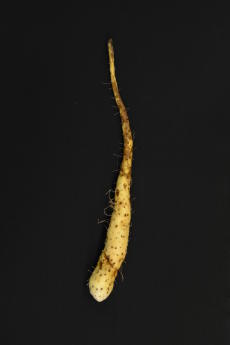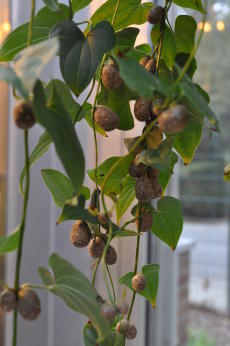

Plant storage organs, such as the tubers of potatoes or the storage roots of cassava, carrots, or sweet potatoes, are an essential food source for human nutrition. Among these are yams (Dioscorea spp.), monocotyledonous plants that produce edible and nutritious tubers, which constitute an important staple food for millions of people in tropical and subtropical countries. The Chinese yam (Dioscorea polystachya) can thrive in temperate climates, such as those found in Central Europe, and could be cultivated here to enrich our daily diets. However, cultivation is currently not economically viable due to the fact that the heavy underground tubers can extend up to one meter into the ground and have a club-like shape, with the tuber being thin at the top and becoming thicker towards the base. This unique shape poses a challenge during harvesting, as the tubers cannot be simply pulled out but must be carefully dug out. Both the underground tubers and the small aerial tubers (bulbils) are rich in starch and minerals and contain healthy compounds that can be used to treat diabetes and hypertension, as well as regulate blood cholesterol levels. As a result, the Chinese yam holds great promise as a future "functional food".
We are investigating the development of yam tubers and developing molecular markers for smart breeding to optimize cultivars suitable for successful and economically attractive cultivation of yams. On a broader scale, we are examining the molecular signaling processes involved in the initiation and growth of plant storage organs. Our methods combine functional gene characterization, big data analysis, plant phenotyping, and chemical analysis of plant tissues.
Publications:
Further information
http://www.pflanzenforschung.de/de/journal/journalbeitrage/eine-gruene-zukunft-gestalten-foerderprogramm-pflanzenz-10766
http://www.pflanzenforschung.de/de/plant-2030/fachinformationen/projektdatenbank/etablierung-von-yams-als-potentielle-kulturpflanze-euro-431
http://www.pflanzenforschung.de/de/themen/pflanzen-im-fokus/yams-yamswurzel
